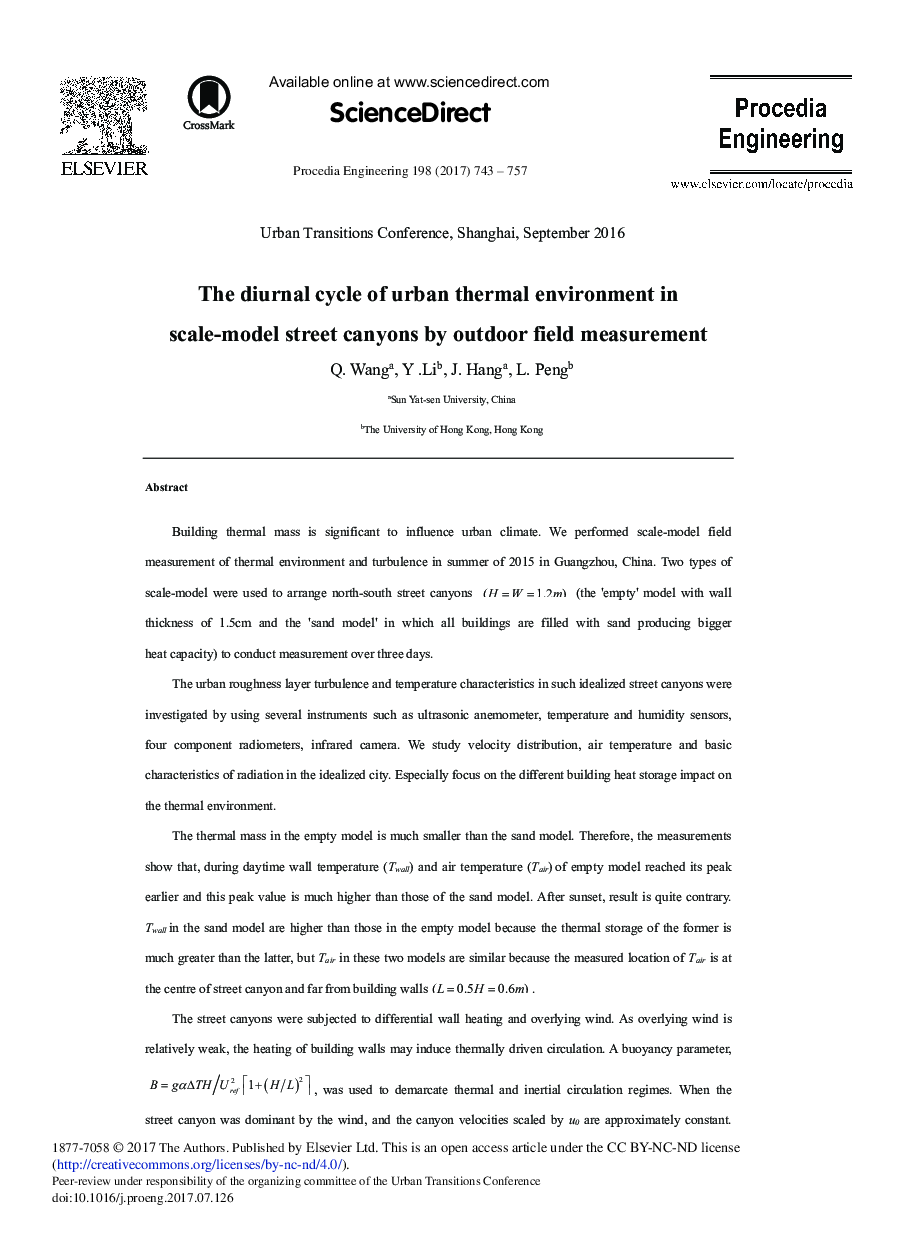| Article ID | Journal | Published Year | Pages | File Type |
|---|---|---|---|---|
| 5027436 | Procedia Engineering | 2017 | 15 Pages |
Abstract
The street canyons were subjected to differential wall heating and overlying wind. As overlying wind is relatively weak, the heating of building walls may induce thermally driven circulation. A buoyancy parameter, , was used to demarcate thermal and inertial circulation regimes. When the street canyon was dominant by the wind, and the canyon velocities scaled by u0 are approximately constant. When the thermal circulation becomes important, velocity in canyon and buoyancy parameter shows a relationship: .
Related Topics
Physical Sciences and Engineering
Engineering
Engineering (General)
Authors
Q. Wang, Y. Li, J. Hang, L. Peng,
